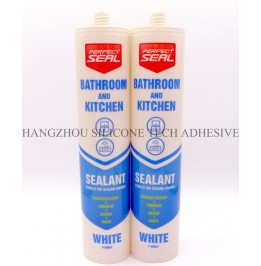Compatibility Testing Between Sealants and Cleaning Agents After Application
Sealants in bathrooms, kitchens, or industrial spaces are frequently exposed to cleaning agents, which can degrade their integrity over time. Testing compatibility ensures the sealant maintains adhesion, flexibility, and appearance when interacting with common cleaners. Below are structured methods to evaluate and address potential reactions without compromising performance.

Before conducting compatibility tests, create controlled conditions to isolate variables and ensure reliable outcomes.
Selecting Test Surfaces:
Use a small, inconspicuous area of the sealed surface or replicate the substrate on a sample board. This avoids visible damage to the main installation while providing realistic results.
Identifying Common Cleaning Agents:
Categorize cleaners by type—acidic (e.g., vinegar-based), alkaline (e.g., ammonia-based), or neutral (e.g., soap-based). Test each category separately, as chemical reactions vary widely.
Documenting Baseline Conditions:
Record the sealant’s original appearance, texture, and adhesion. Photograph the area before testing to compare changes objectively. Note environmental factors like temperature and humidity.
Apply cleaning agents systematically to assess their impact on the sealant’s physical and chemical properties.
Spot Application Method:
Dab a small amount of cleaner onto the test surface using a cotton swab or soft cloth. Avoid saturating the sealant, as excessive moisture can mimic damage rather than reveal true incompatibility.
Monitoring Reaction Time:
Leave the cleaner on the sealant for the duration specified on its label (typically 5–10 minutes). For aggressive agents, shorten the time to prevent overexposure. Rinse thoroughly with water and dry.
Evaluating Immediate and Delayed Effects:
Check for discoloration, softening, bubbling, or loss of adhesion immediately after rinsing. Re-examine the area 24–48 hours later, as some reactions may occur gradually.
Simulate real-world conditions by testing how the sealant withstands repeated exposure to cleaning agents over time.
Cyclic Testing Protocol:
Apply the cleaner daily to the test area for 7–14 days, mimicking frequent cleaning routines. Rinse and dry after each application. Observe cumulative effects like gradual erosion or staining.
Flexibility and Adhesion Checks:
After cyclic testing, press a finger into the sealant or use a putty knife to test its resilience. A compromised sealant may feel tacky, crack, or detach from the substrate.
Colorfastness Evaluation:
Compare the test area to an unexposed section of the sealant. Fading, yellowing, or uneven pigmentation indicates incompatibility with certain cleaners.
If tests reveal adverse reactions, implement corrective measures to protect the sealant and substrate.
Neutralizing Acidic or Alkaline Residues:
Rinse the area with water and apply a pH-neutralizing solution if the cleaner left a residue. For acidic cleaners, use a baking soda-water mix; for alkaline agents, opt for a vinegar-water solution.
Applying Protective Barriers:
For frequently cleaned surfaces, consider a clear, compatible topcoat or wax to shield the sealant. Test the barrier’s compatibility with both the sealant and cleaners beforehand.
Revising Cleaning Protocols:
Switch to neutral or sealant-safe cleaners if incompatibility persists. Train staff or household members to avoid harsh chemicals on sealed areas.
By following these structured testing methods, users can identify incompatible cleaning agents early and adopt preventive strategies. Regular re-testing after sealant repairs or changes in cleaning products ensures ongoing protection against degradation.
Copyright 2019 by Hangzhou Silicone Tech Adhesive Co., Ltd. All rights reserved.
Bathroom Sealant | Acrylic Sealant | Dow Corning 795 | Aquarium Sealant | Dow Corning 732 | Clear Silicone Sealant | Polysulfide Sealant | Glazing Sealant | Mirror Sealant | IG Sealant
Powered by Onepound